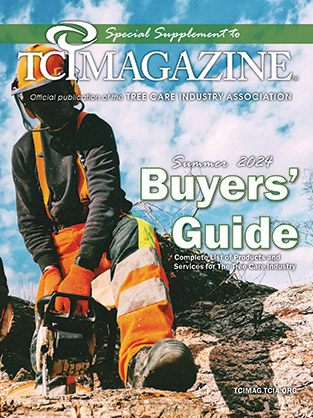Fall Protection and Rescue Plans for Nontraditional Job Sites – Case Studies
In November 2023, at TCI EXPO in St. Louis, Missouri, we three authors presented two case studies where The Davey Tree Expert Company and Petzl worked congruently to find safe and compliant work-positioning solutions for crews on unique and nontraditional work sites. This article delves into the key aspects of the presentation, including the identification of nontraditional job sites, compliance requirements and the intricacies of formulating effective rescue plans on two case studies: working on green roofs and confined-space entry for plant-health-care tank cleaning and maintenance.
Note that this article is not an exhaustive analysis of the topics within the presentation, and the reader should consult proper standards and training before any work is performed.
Introduction to nontraditional job sites
Traditional job sites are arborists’ normal day-to-day work environments: a front lawn with a few trees, the back of a commercial parking lot lined with trees, etc. On these job sites, arborists operate within “normal” regulatory and compliance regulations, such as OSHA 1910.67 when working in a bucket, the OSH Act General Duty Clause, adopting ANSI Z133 best practices, etc.
Alternatively, we define a nontraditional job site for arborists as an environment where typical tree-operation compliance requirements are inapplicable. These include green roofs, equipment-maintenance areas and construction sites for tree structures, among others.
The primary concern in these nontraditional scenarios is the lack of direct applicability of traditional safety measures, necessitating new solutions for fall protection and rescue, which is why Davey reached out to Petzl to figure out how to get the job done. It is the employer’s responsibility to provide a safe working environment, and Petzl works across multiple industries and standards, so the two businesses sat down to tackle these challenging scenarios together.
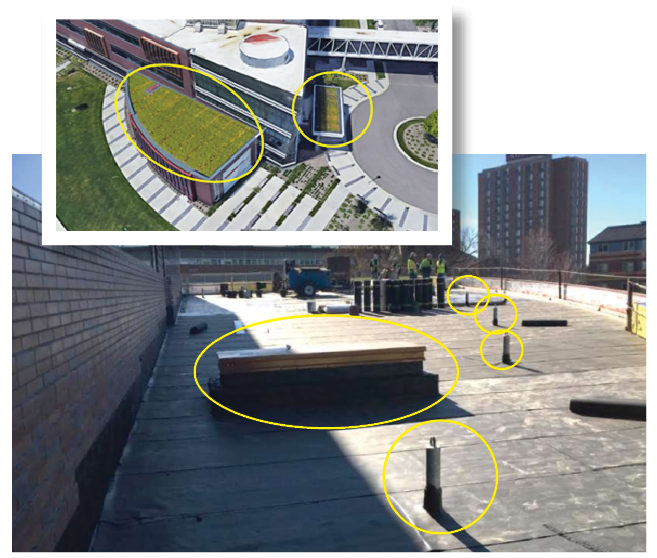
Compliance options for nontraditional job sites
The first step in determining what work methods and equipment to use on a nontraditional job site is to know what compliance standard to work under. For the first case study, working on a green roof that has shrubs to maintain, Davey must work under OSHA 1910, General Industry regulations. It’s important to note that OSHA is law and must be followed (whereas ANSI standards are not always law).
This article will not delve into the intricacies and details of OSHA 1910 outside of one oversimplified requirement that necessitates workers to utilize a guardrail, safety net, personal fall-arrest system or travel restraint when exposed to a fall greater than 4 feet. To comply with this law in practical terms for the green roof, Davey could install a guardrail or a horizontal lifeline, or work in fall arrest or travel restraint. Before moving forward, let’s take a step back and look at this scenario.
Case study one: Green roofs
One of Davey’s arborist representatives brought to their safety & training division a sales opportunity to do a job at a college that had various shrubs on top of a green roof. For the college to continue receiving tax credits for their green roof, the shrubs needed to stay alive, so Davey was called in to weed and maintain the roof.
Davey’s safety team quickly identified a roof with no guardrails or permanent horizontal lifeline systems. The college nixed installing a guardrail or permanent horizontal lifeline due to aesthetics, and a safety net wasn’t practical. So Davey needed to find a way to work in fall arrest (not falling to the ground when subjected to a fall) or in travel restraint (not able to reach the edge of the structure; no risk of a fall). A bucket truck could not be used, because it would not reach the interior of the roof. (Photo 1)
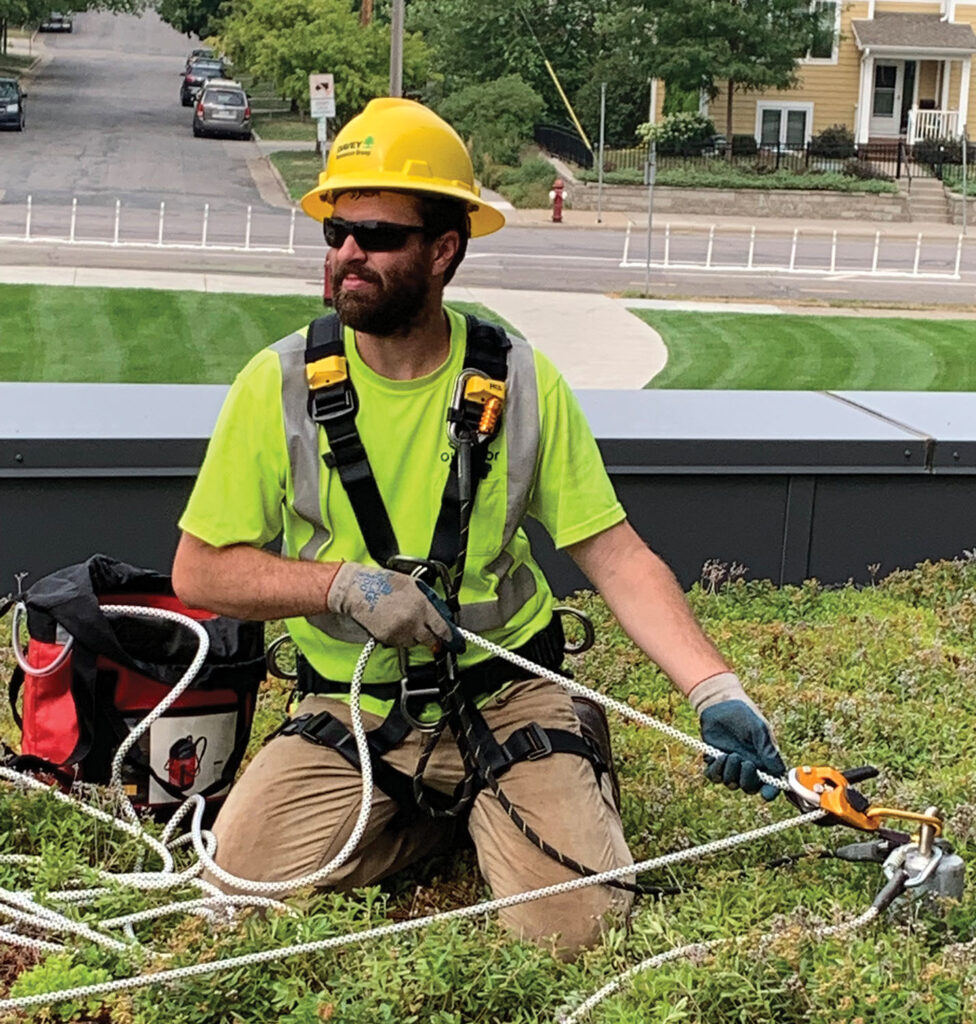
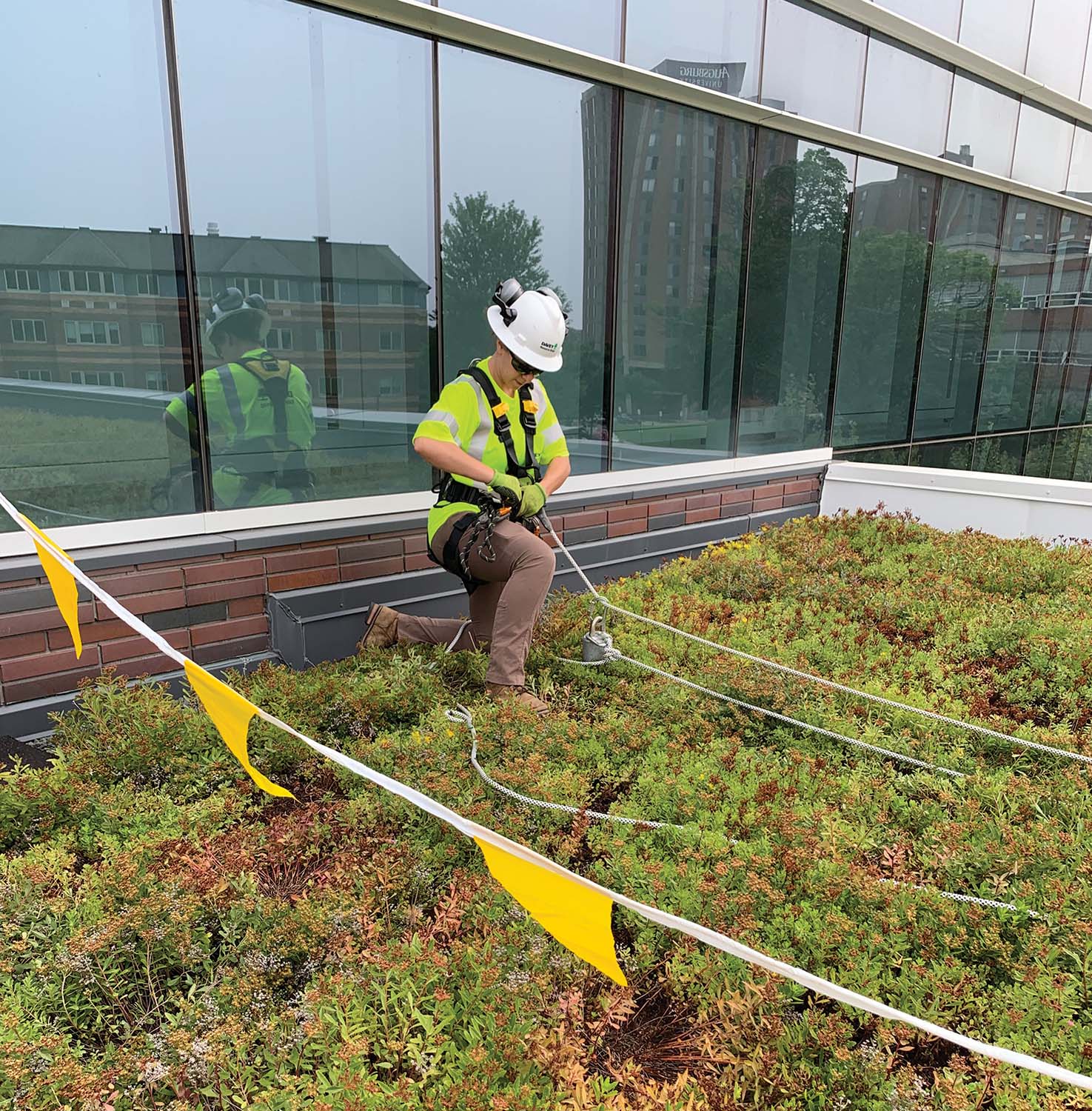
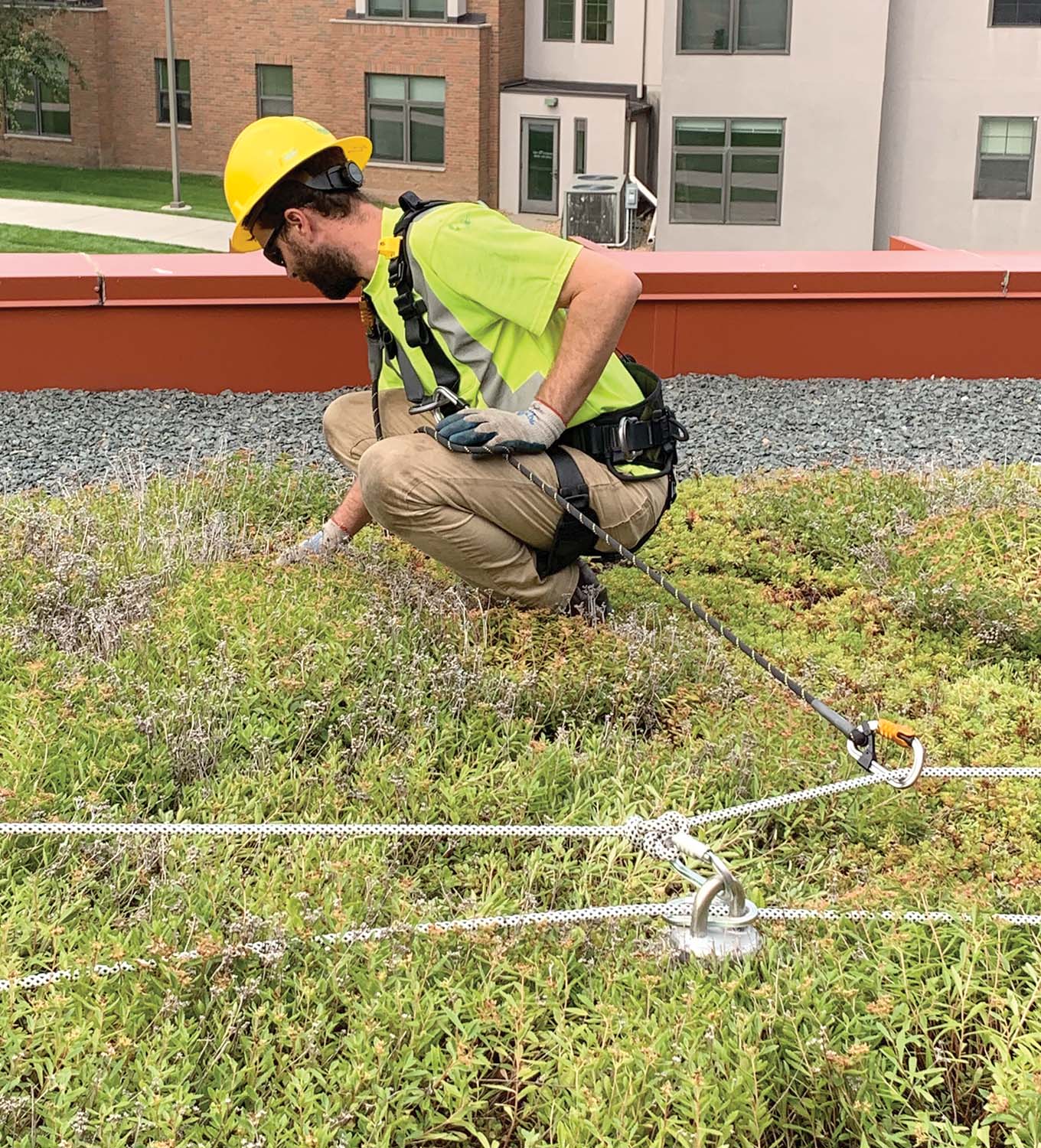
What the roof thankfully did have was tested and rated anchor points. (Photo 2) After consulting Petzl on how to build a horizontal lifeline with these existing anchor points, work processes were created to build a temporary horizontal lifeline, then work in travel restraint.
To build the temporary horizontal lifeline, two workers ascended an internal stairwell to the roof. One worker belayed the other, who was walking between the anchor points on a personal fall-arrest system using a mobile fall arrester and a full body harness. (Photo 3) The rescue plan, if the lead climber building the lifeline were to fall off the edge, was to lower the employee to the ground via the belay device. Once the lifeline was built by anchoring the rope to each anchor point, the lifeline was tensioned and locked off with a progress-capturing belay device. (Image 1 and Photo 4)
After the horizontal lifeline was built, the workers used fixed dual lanyards to bypass anchors while always maintaining connection to the lifeline. The lanyards were not long enough for the workers to reach the edge, so the production crew worked in travel restraint. Using this combination of fall arrest and travel restraint allowed Davey to successfully finish the job and win a client for recurring business. (Photo 5)

Case study two: Confined-space entry
The second nontraditional job site explored was operating in confined spaces. (Photo 6) A confined space is any space that 1) has limited means of entry and exit; 2) is not designated for continuous occupancy; and 3) is large enough for a person to fit through well enough to perform tasks. Many tree care companies operate around confined spaces daily with PHC tanks.
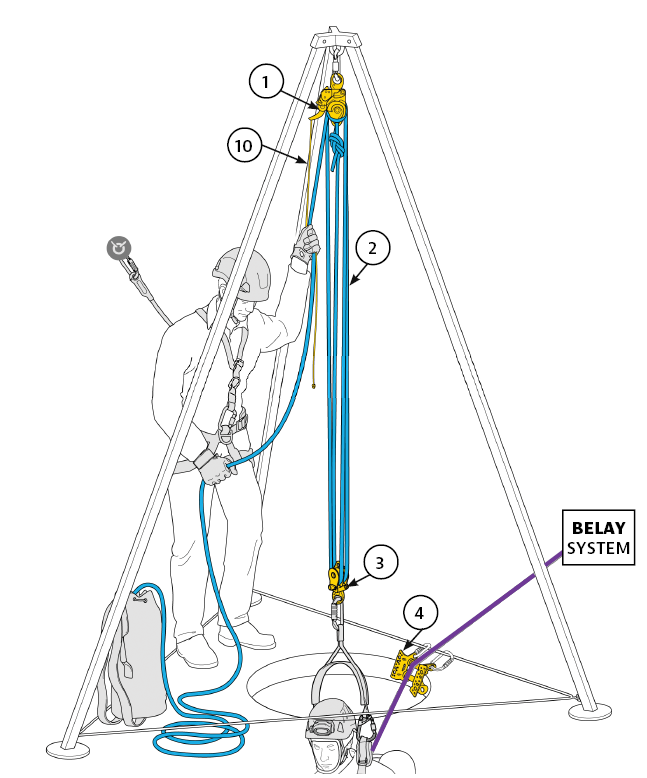
Numerous regulations apply if entering a confined space (e.g., OSHA 1910.146). We will not discuss requirements here, but know that confined-space entry is a complex task that may require permitting.
Davey wanted to clean and repair their own PHC tanks to have immediate rescue if something were to go wrong, to have control over the cleaning-and-maintenance process and to have cost savings (i.e., did not have to sub out the work). All work was performed in a regional maintenance facility where two overhead cranes were available to use. The cranes were positioned over the tank-entrance location, then locked out and tagged out, as were the PHC tanks. The PHC tanks were relatively small, and a simple raise-and-lower solution could accomplish the job.
Two workers actively participated in this process; one worker attended the lowering/raising system while the second operator was lowered into the tank and performed the work. The operator in the tank was always connected to the system, which was an assembled mechanical-advantage rescue kit. The kits chosen were designed specifically for confined-space entry, and allow the attendant to switch between raising and lowering in seconds. The mechanical advantage system enables one attendant to raise the entrant without additional help. The basic process is seen in Images 2 and 3.
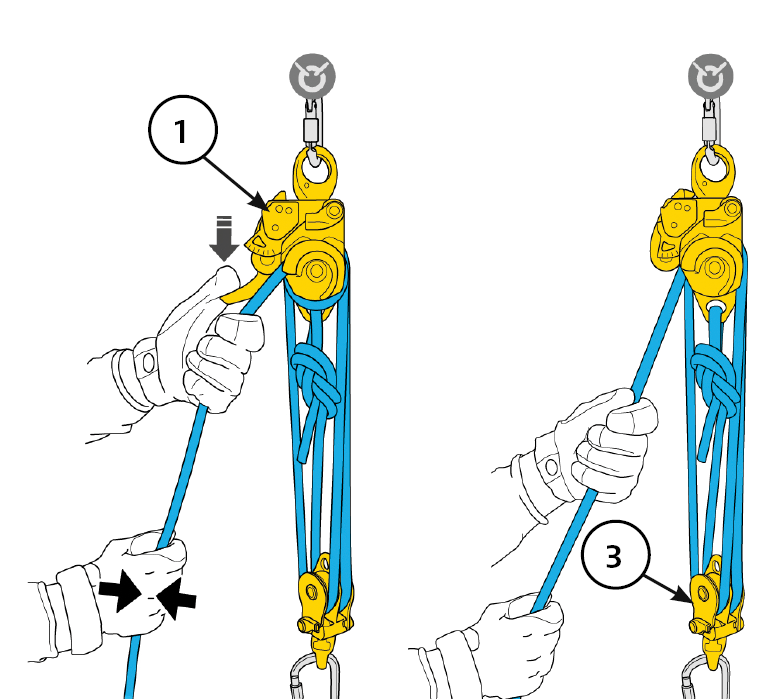
The assigned attendant in this scenario is both the entry method and the exit method – they are the rescue plan if something were to go wrong. In that scenario of a rescue, 911 would be first called, then the entrant would immediately be raised if the atmosphere in the tank were hazardous (previously determined or not). If the atmosphere was not hazardous, the team would communicate and evaluate next steps.
Wrap-up
In both scenarios, the green roofs and confined-space entry, new equipment was used that was different from traditional tree care equipment. This different gear was purpose-built, and Davey spent time training on the equipment and pre-building the systems before ever working aloft. Technical notices were read, PPE inspections were accomplished and employees used the gear on the ground until they were comfortable with the gear and procedures.

While these nontraditional work sites are rare, they do open possibilities for companies to expand their potential sources of revenue and cost savings for maintenance.
The authors would like to thank both Davey and Petzl for working together and accomplishing the jobs safely while in compliance, two paramount aspects of any job site.
This article was based on the authors’ presentation on the same topic during TCI EXPO ’23 in St. Louis, Mo. To view a video recording created for that presentation, click here.
Rudy Rutemiller is national sales manager for Petzl, a 28-year TCIA corporate member company based in Salt Lake City, Utah. He is also a certified arborist.
Timothy M. Walsh, CTSP, who was with Davey at the time of this presentation, is vice president, safety & training with The Townsend Company LLC, a dual-accredited, 47-year TCIA member company based in Muncie, Indiana.
Jeremy D. Lewis, CTSP, is health & safety training and compliance manager for The Davey Tree Expert Company, an accredited, 52-year TCIA member company based in Kent, Ohio.


